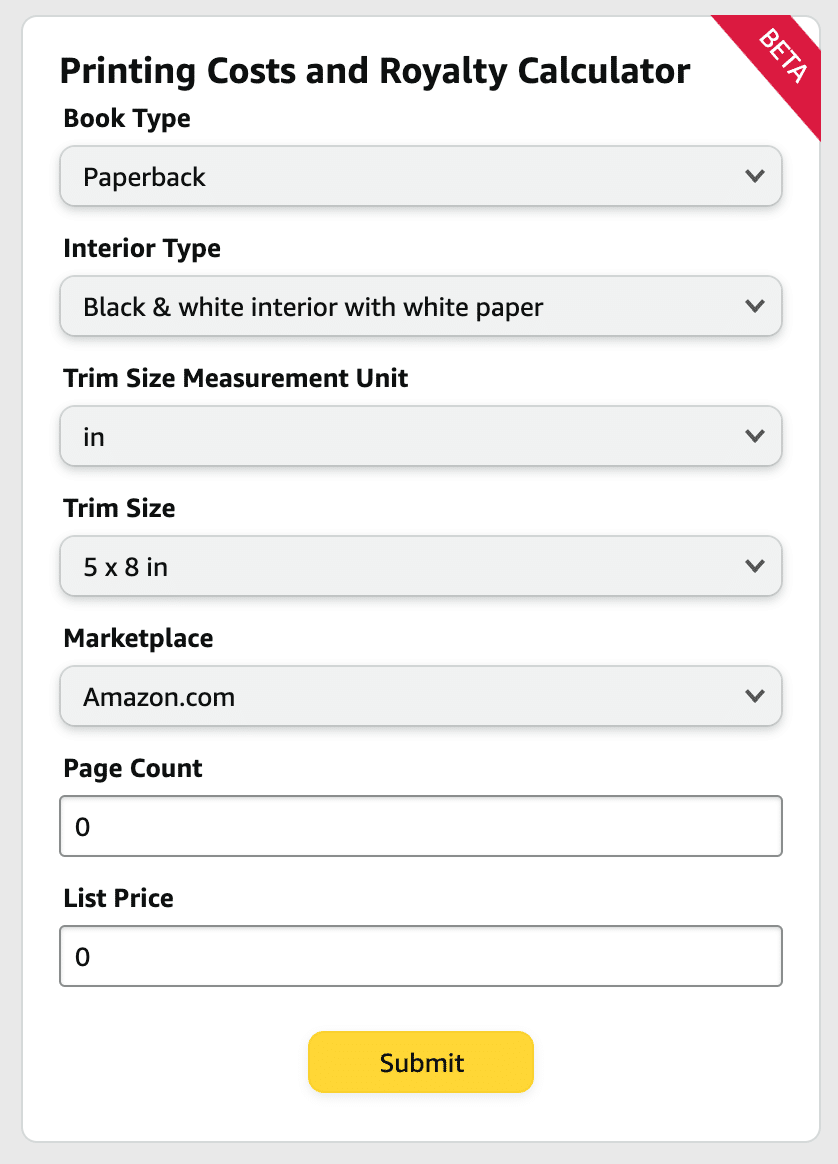
Welcome back to our exhilarating end-of-year crash course, where we’re dissecting the intricacies of change management to fortify your KDP Account for the rollercoaster ride that is 2024. In our previous installment, we delved into the importance of being the change ninja your business needs, always staying one step ahead of the curve. This week, we’re not just riding the winds of change; we’re surfing the unpredictable waves of Amazon’s pricing modifications. Brace yourself, dear reader, as we decode the labyrinth of adjustments, unexpected fees, and a dash of humor because, why not?
THE WINDS OF CHANGE HIT AMAZON’S PRINTING COSTS
In the merry month of May 2023, Amazon, in its infinite wisdom, dropped the bombshell – a bombshell disguised as an email, warning KDP publishers of impending changes to printing costs. A mere month later, on June 20, the storm hit.
You know change is afoot when Amazon sends out an email. This wasn’t your average, run-of-the-mill update; it was a proclamation that shook the foundations of many a KDP publisher. The ominous message was clear – starting June 20, 2023, the pricing structure you’d grown to love (or at least tolerate) was about to undergo a makeover.
And lo and behold, here’s the breakdown of the changes they dropped on us like confetti at a surprise party:
- Fixed Cost Hike for All Paperback and Hardcover Books: Because who doesn’t love a good price hike, right? The fixed cost for all your beloved paperback and hardcover editions would now skyrocket. Blame it on the cost of materials, suppliers demanding a ransom, or just general inflation – the why doesn’t matter; your wallet will still feel it.
- New Costs for Oversized Books: Do you like big books, and you cannot lie? Well, get ready to pay extra for them. Any paperback or hardcover that’s larger than life (or at least 6.12 inches by 9 inches) will now come with an additional fixed and per-page cost. It’s like paying extra for legroom, but for your books.
- Color-ink Print Books Get a Break: In the sea of changes, there’s a tiny island of relief – a decrease in per-page costs for certain color-ink print books. It’s like a coupon for your troubles, but don’t get too excited; the savings might just vanish like a mirage.
Hold onto your manuscripts, folks. The tidal wave of change was threatening your precious royalties. Brace yourselves for impact.
The Amazon KDP Bombshell: Publishers Caught in the Storm
Picture this: you’re casually sipping your morning coffee, scrolling through your emails, and there it is – an innocuous-looking email from Amazon KDP. You click it, and suddenly, you’re hit with the news. Changes. Changes to your cozy little printing costs. And these changes, my friend, aren’t mere adjustments; they’re seismic shifts in the landscape you’ve come to call your own.
Amazon, in its digital wisdom, declared, “On June 20, 2023, we’re making the following changes to printing costs to better align with today’s cost of materials.” As if the costs of living weren’t enough, now our beloved printing costs were following suit.
Amazon’s reasoning was laid out with the clarity of a storm warning. Printing costs have been stagnant since the launch of KDP print books in 2016. Six years is an eternity in the digital age. The unrelenting march of inflation and the ever-increasing cost of running a global printing empire had finally caught up.
If you’re a low-content publisher, you felt the tremors of change. Suddenly, the profits that seemed like a steady stream threatened to dry up. The words “we’re changing our fees to better align with today’s cost to print books” hit harder than a plot twist in a season finale. Suddenly, the cozy nook you’d carved in the digital bookshelves was under threat.
Amazon, like the harbinger of fate, left publishers with a choice – adapt or face the consequences. A decision not to be taken lightly, especially when royalties were hanging in the balance.
STRATEGIES IN THE WAKE OF THE STORM
Now, as the dust settles and the echoes of the Amazon announcement linger, what’s a savvy publisher to do? This isn’t just a storm to weather; it’s a full-blown transformation in the publishing climate. Let’s break down the strategies emerging in the aftermath.
Adjusting Book Prices: The Royalty Balancing Act
Let’s talk turkey – or in this case, royalties. With larger books facing potential royalty reductions, publishers are crunching the numbers. The solution? Consider raising book prices strategically. It’s like a financial chess game – one wrong move, and your royalties could be checkmated.
So, gather around, publishers, and let’s play the pricing game. Amazon’s printing cost changes are like a surprise twist in a reality show, and you’re the contestant figuring out how to stay in the game without losing your shirt.
- Diving into Specialty Books: Because Every Book Is Special
In the sea of printed pages, there’s an island of opportunity – specialty books. These aren’t your run-of-the-mill, generic notebooks. No, no. Specialty books are the prima donnas of the publishing world, commanding premium prices. Think memory books, the divas of the bookshelf. People aren’t just buying a book; they’re investing in an heirloom. Suddenly, you’re not just a publisher; you’re a curator of memories.
So, dear publishers, dust off your creative hats and start brainstorming those specialty book ideas. In a world of change, specialty is your secret weapon.
- Reassessing Low-Content Strategies: A Plot Twist for the Plot Twisters
Ah, the low-content strategy – the unsung hero of easy publishing. But with Amazon’s winds of change blowing, it might be time to reconsider. Imagine a plot twist in your favorite novel – unexpected, yet full of potential. Publishers are eyeing a shift, exploring medium to higher content books that can fetch a premium. It’s like leveling up in the game of publishing – new challenges, new rewards.
Dear publishers, it’s time to reassess your arsenal of low-content wonders. Are you the protagonist who adapts to the evolving storyline, or are you sticking to the same script while the world around you transforms?
- Managing Book Pages: Because Size Does Matter
Let’s talk pages – the unsung heroes of the publishing world. In the grand scheme of things, the number of pages might seem trivial. But in the realm of printing costs, each page is a silent player in the financial opera. Publishers are playing maestro, carefully orchestrating the number of pages to dance to the tune of affordability. It’s like composing a symphony – every note (or page) matters.
So, publishers, channel your inner conductor. The number of pages isn’t just a statistic; it’s a strategic maneuver. Think of it as the difference between a sonnet and an epic – both beautiful,
In the tempest of Amazon’s pricing changes, adaptation is the ship that will weather the storm. As a publisher, you’re not just a sailor; you’re a captain steering through uncharted waters. Adjust those sails, consider the premium ports of specialty books, and, for the love of all things literary, don’t forget the importance of the page count symphony.
So here’s to conquering the winds of change and making 2024 the year your KDP account not only survives but thrives. May your sales be plentiful, your royalties abundant, and your sense of humor intact. Cheers!



